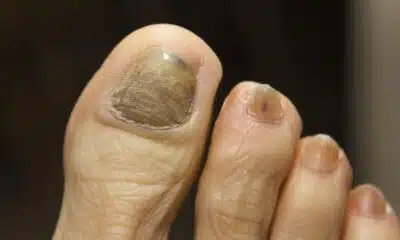HEALTH
Lentigo Maligna Melanoma: Understanding the Condition and its Symptoms
Lentigo maligna melanoma is a kind of skin cancer that typically affects adults over 50 years of age. It is produced by prolonged sun exposure and is most typically found on sun-exposed regions of the body, such as the face, neck, arms, and legs. In the absence of treatment, lentigo maligna melanoma can grow and spread to other parts of the body, making it a dangerous condition. This article examines the symptoms, diagnosis, and treatment options for lentigo maligna melanoma.
What is Lentigo Maligna Melanoma?
Lentigo maligna melanoma is a slow-growing kind of skin cancer caused by the uncontrolled growth and multiplication of skin cells. Unlike other types of skin cancer, lentigo maligna melanoma does not normally spread rapidly; but, if left untreated, it can develop into lentigo maligna, a more dangerous form of skin cancer.
Causes of Lentigo Maligna Melanoma
Lentigo Maligna Melanoma is caused by a mix of hereditary and environmental causes, including as prolonged sun exposure, sunburns, and tanning bed use.
Symptoms of Lentigo Maligna Melanoma
Early-stage lentigo maligna melanoma can be difficult to identify because its symptoms are frequently minor and may go unreported. Among the most frequent signs of lentigo maligna melanoma are:
• A flat, brown, or black area on the skin that is greater than a quarter of an inch in diameter.
• A spot that is not symmetrical or has an irregular border.
• A spot with several hues, such as brown, black, red, and blue.
• A spot that itches or hurts • A patch that bleeds or becomes crusty
Diagnosing Lentigo Maligna Melanoma
If you feel you have lentigo maligna melanoma, it is imperative that you see a doctor immediately. Your physician will do a physical examination of your skin and may further perform a biopsy to confirm the diagnosis. During a biopsy, a small sample of questionable skin is extracted and sent to a laboratory for analysis. The results of the biopsy will assist your doctor in determining whether you have lentigo maligna melanoma and, if so, cancer’s aggressiveness.
What is the prognosis for Lentigo Maligna Melanoma?
The prognosis for Lentigo Malignant Melanoma relies on cancer’s stage and the efficacy of treatment. In general, the prognosis improves the earlier the cancer is diagnosed and treated. If the cancer is confined to the epidermis and has not migrated to other regions of the body, the prognosis is often excellent.
Treatment Options for Lentigo Maligna Melanoma
The treatment for lentigo maligna melanoma depends on cancer’s size, location, and stage. Common treatments for lentigo maligna melanoma include the following:
The most common therapy for lentigo maligna melanoma is surgery. During surgery, the malignant tissue and a tiny quantity of good tissue surrounding it will be removed. The wound will subsequently be stitched shut.
• Radiation therapy: This treatment kills cancer cells with high-energy X-rays. It is frequently used with surgery to guarantee that all cancer cells are eliminated.
• Chemotherapy: This treatment kills cancer cells using medicines. Typically, it is reserved for the most aggressive types of lentigo maligna melanoma.
Prevention of Lentigo Maligna Melanoma
You can avoid Lentigo Maligna Melanoma in a number of ways, including:
- Limiting Sun Exposure: Limiting your sun exposure, particularly between 10 a.m. and 4 p.m. when the sun’s rays are at their highest, can help minimize your risk.
- Utilizing Protective Garments: Wearing protective gear, such as wide-brimmed hats, long-sleeved shirts, and slacks, can also assist in shielding your skin from UV rays.
- Utilizing Sunblock: Using a broad-spectrum sunscreen with an SPF of at least 30 can aid in preventing UV damage to the skin. Apply sunscreen every two hours and after swimming or perspiring.
- Regular Skin Checks: It is essential to routinely inspect your skin for any strange moles or patches, and to see a doctor if you observe any changes.
Conclusion
Lentigo maligna melanoma is a severe condition that must be addressed seriously. You can lower your risk of developing this form of skin cancer by educating yourself about it and taking the essential precautions to prevent it. If you feel you may have lentigo maligna melanoma, it is imperative that you see a doctor immediately.



















